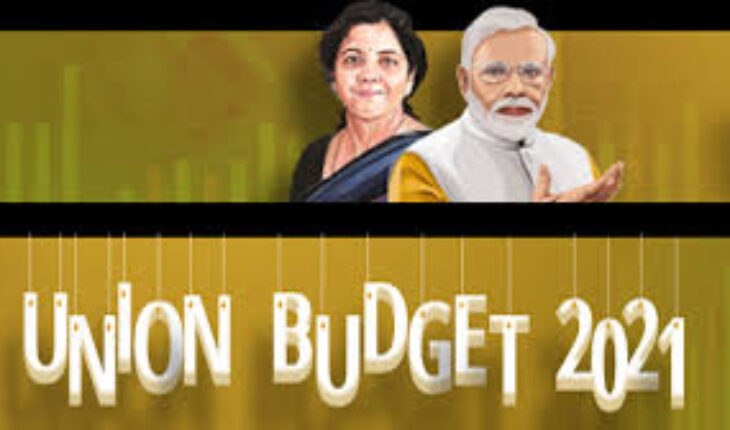By Dominick Rodrigues
Mumbai: The pre-budget scenario witnessed a varied outlook on Budget 2021, as industry honchos pitched in with their piece of advice amidst hopes of economic benefits for the country’s economy from the Central Government.
Highlighting the highly-anticipated, post-Covid Budget as ‘expected to provide the much-needed fiscal boost to the Indian economy,’ G Murlidhar, MD & CEO, Kotak Mahindra Life Insurance Company Ltd, said “An engaging and extensive pre-budget industry consultation process has raised hopes for a growth-oriented budget, where the Finance Ministry is expected to prioritise job-driven growth recovery and infrastructure building. Given the government’s weak fiscal position, some innovative means to finance budget deficit may be introduced as well. Based on our learning of last few months, we expect the government to encourage people to be prepared for life’s uncertainties by incentivising them to invest in various insurance products. More investment in insurance products will in turn help finance fiscal deficit as well as support infrastructure lending.”
Expecting an aggressive “Atmanirbhar“ growth agenda as the Budget’s central theme, Shanti Ekambaram, Group President – Consumer Banking, Kotak Mahindra Bank Ltd, said getting growth back on track in FY21-22 — following COVID-19 severely disrupting India’s growth trajectory – would be the Finance Minister’s foremost priority with infrastructure investment as ‘key’ for growth alongside higher allocations and formation of a Development Finance Institution for infrastructure financing.
“Greater thrust on investments in healthcare infrastructure and insurance incentives, boost for housing and real estate, aggressive divestment to raise resources, jobs creation and specific reforms to help sectors under stress will also be on the agenda, besides providing economic relief to India’s middle and lower middle class who have been deeply impacted by the pandemic,” she said, while observing fiscal deficit target for FY21-22 to be around 5 to 5.5% of GDP with allocation expected for recapitalisation and privatisation of PSU banks.
Describing the Indian automobile industry as a ‘barometer’ of the Indian economy and one of the key pillars of India’s growth trajectory through contributing ~4.5 million jobs, Vinkesh Gulati, President Federation of Automobile Dealers Associations (FADA, said “We look forward to a demand-led growth oriented budget.”
“Honorable Finance Minister Smt. Nirmala Sitharaman should Introduce benefits of claiming depreciation on vehicles for Individuals paying Income Tax and extend depreciation period for corporates, as this will boost vehicle demand during these extraordinary times while also increasing the number of individuals filing IT returns and promoting growth in GST collection for the government. The increase in depreciation rate for all types of vehicles — which was valid till 31st March ’20 — should also be extended for FY 2021 as it will fuel demand further,” he said.
“Reduction of Corporate Tax for Proprietary & Partnership Firms: The government reduced corporate tax to 25% for private limited companies with a turnover of up to Rs 400 crores last year. This benefit should also be extended to all Proprietary and Partnership firms since most traders in the auto dealership community are in this category. This will boost morale and sentiment of traders, who together employ 5 million people, 2.5 million of whom are on direct employment. The auto trading community is an employment generating mechanism as we do not displace employees and give them employment in their home locations,” he said.
“Auto Dealers should be kept out of annual TCS of .1%. The Finance Bill 2020 introduced TCS of .1% to be charged annually w.e.f October 1, 2020. This is a huge financial burden on the automobile retail industry, tying up working capital until dealers receive refunds. It will affect demand since vehicle acquisition cost will go up and hence Auto Dealers should be kept out.”
“Need for attractive incentive for successful implementation of Vehicle Scrappage Policy across the country. The government must design a robust Inspection & Certification (I & C) policy or End of Life Vehicles (ELV) policy for vehicles in the country. However, as both the above policies would take time to be effectively implemented, there is a need for an immediate scheme based on incentive for encouraging voluntary scrapping of old vehicles and replacing them with newer ones. The new vehicles are cleaner and meet stringent emission requirements.”
“FADA recommends the policy implementation should be focused on incentives rather than strict mandates. It is more feasible to encourage people than to force them to replace their old vehicles with new ones. We have already witnessed a similar success in the voluntary surrender of Gas Subsidies by consumers. All vehicles registered in India until 31st March 2000 should qualify under the Modern Fleet Vehicle Replacement Scheme. Similar schemes have been successfully implemented in the US, Canada, the UK and Italy by providing fiscal incentives and concessions for replacement through a single-window fleet modernization program,” Gulati added.
Emphasizing the 2021 Budget focus on ‘’RECOVERY & GROWTH,’’ Vikas Bajaj – President, AIFI (Association of Indian Forging Industry), said “The Government needs to invest more funds in major industries, including infrastructure, real estate, manufacturing and tourism to increase post- COVID-19 employment and also existing incentives for exports. There is also a need to speed up the process of refunding the GST to provide the industry with liquidity. In addition, the highest tax rate under the GST legislation must also be minimised by up to 18% in order to boost demand. The industry is also awaiting some news on the scrappage policy”.
Rushi Shenghani, CEO & Founder, Earth Energy EV, said that with Atmanirbhar Bharat Abhiyan aimed at inspiring companies and India’s green mobility growth, government incentives is needed to further support the localization of battery production which accounts for around 40 percent of the EV development cost. “The government can reduce the GST on batteries as well as import duty slabs. It presently incorporates the GST of 18 percent on lithium-ion batteries and 28 % on lead-acid batteries.”
“The cost of an EV can come down significantly with the GST reduction. Also, the Govt should finalize its incentives-based scrappage policy, which can help create demand in the commercial vehicles (CV) segment as well,” he said, adding “We request the government. to also be liberal with Infrastructure spending and +make charging stations mandatory+ in all the official and residential areas as this will contribute to increasing penetration of EV across the country.”
Noting that the FY2022 union budget to witness ‘acute tradeoff’ between stimulating growth and maintaining fiscal rectitude, Suvodeep Rakshit, Vice President & Senior Economist at Kotak Institutional Equities, urged for government focus on increasing stable incomes for population — in the middle and bottom of the pyramid — which have been the ‘worst-hit’ by the pandemic.
“We expect: the budget to strengthen the AtmaNibhar Bharat vision with focus on health, physical infrastructure, and financial sector along with rural India; announcements around DFI for infrastructure financing or ‘bad’ bank to take center-stage as the government aims to finance long term growth; no major changes in taxes except in custom duty, especially on finished/near-finished items in line with the PLI scheme for select sectors.”
Highlighting the pivotal role of ports in the Prime Minister’s vision of making India a “Global Manufacturing Hub and becoming $5 Trillion economy,” Rajiv Agarwal, CEO and Managing Director of Essar Ports Ltd., said the budget should also focus on increasing the contribution of Ports sector to the country’s GDP as it is a significant driver of EXIM trade and hence becomes necessary to keep logistics cost low to encourage exports.
“Indirect taxes on port services has increased to 18% GST as industries like Thermal Power Plants, Fertilizer and Refineries are needed to pay higher logistics and manufacturing cost (on account of no GST Credit) for their raw material movement like Coal, LNG and Crude Oil, POL etc. This is impacting the competitiveness of sea transport as an option, as compared to rail and roads that are less environment-friendly modes of transport. Hence, GST for sea transport should be reduced to 12% for more sustainable benefits.”
“Presently PPP Projects and Major Port Trusts compete for cargo at Ports, which leads to conflict of interest. It is important that Major Ports should act as enablers with PPP projects driving the growth. To further strengthen the current position of the industry players, it is critical for ports to be given enough autonomy and decision-making power to stay ahead in terms of modernization and technological enhancements. Mechanized berths, sufficient stockyard and multimodal evacuation systems for fast turnaround of vessels are ‘key enablers’ for productivity and efficiency of Ports & Terminals. To achieve this, investments will be required in dredging, developing adequate civil infrastructure and securing land along with latest technology equipment to create a mechanized and environment-friendly cargo handling.”
“The budget should also focus on development of Port bases industries and manufacturing hub. Taking a cue from the success of Singapore, Dubai, Antwerp, Rotterdam and Houston for blue economy with all round development, we believe Hazira (Gujarat) and Paradip/ Mahanadi (Orissa) are two such locations, which can be identified as frontrunner for “Port-based Industrial City” prototypes in India. Innovative proposals for large scale development by private players must be awarded on high priority to boost the growth of the sector,” Agarwal said.
Lokendra Ranawat, Co-Founder & CEO, WoodenStreet, said the real estate sector played a pivotal role as the +engine driving growth+ of the Indian economy and many allied sectors and industries like cement, steel, building/construction material, paint, consumer durables which directly or indirectly witness an impact due to developments in the realty sector. “Hence, with a boost, the real estate sector is sure to have a positive impact on the associated sectors and industries, besides seeing a substantial rise as well in employment generation.”
“Have the government and RBI done enough to bail out the economy – and, by implication real estate?,” is the question posed by Anuj Puri, Chairman – ANAROCK Property Consultants. “After all, the realty industry remains one of the most precise +bellwethers+ of the state of India’s economy. While the country waits for the first vaccines to roll out, Union Budget 2021-22 presents several opportunities to give the sector a shot in the arm, too. Given that real estate contributes more than 8% to the Indian economy, it has justifiable expectations.”
He said multiple measures were announced in 2020 to beat the unprecedented impact of COVID-19 on the overall economy and the real estate industry. These included: RBI’s massive repo rate cut of 140 bps (leading to the lowest home loan interest rates in over 15 years); A six-month moratorium on EMIs; Restructuring of loans of real estate companies at the project level; At a state level, stamp duty reductions in Maharashtra; A liquidity boost to NHB; and the first real-time deployments of rescue capital from the SWAMIH fund.
“These measures were proactive and commendable – but not surprisingly — given the depth of pain in the real estate sector — not enough. The housing industry needs focused measures to further bolster demand in 2021. This year, the demands go beyond the usual suspects of single-window clearance and industry status,” he said, adding “Affordable housing is very likely to get another booster shot. However, the budget also needs to focus on the larger market as, more than ever before, homebuyers and investors need focused tax incentives to get mobilized. Also, as the government is aware, developers’ liquidity woes need to alleviated to forestall further market mayhem.”
Puri urged the Central Government to: hike the INR 2 lakh tax rebate on housing loan interest rates under Section 24 of the Income Tax Act to at least INR 5 lakh to generate healthier housing demand, most notably in affordable and mid-segment housing; Personal tax relief, either by tax rate reductions or amended tax slabs as the last increase in the deduction limit under Section 80C (to INR 1.5 lakh a year) was in 2014 and an upward revision is long overdue; GST waiver for under-construction homes – The present GST rate on under-construction properties is 5% minus the ITC benefit for premium homes (>INR 45 lakh) and 1% for affordable homes (<INR 45 lakh). Even a limited period waiver of GST will reduce overall property cost and thus push demand for under-construction homes, which have been slacking presently. Funds from buyers can aid developers towards project construction and thus lessen their dependence on financial institutions. The most-recent limited-period Stamp Duty cut in Maharashtra significantly boosted demand in both MMR and Pune; More incentives for private sector investments in affordable housing – Despite the benefit of infrastructure status for this critically important segment, developers are unable to get funding from major banks and NBFCs at affordable cost. The profit margins for affordable housing projects continue to be extremely low; Ease liquidity – The liquidity crunch had a cascading impact across sectors, including real estate. Project delays – the biggest fallout of the cash crunch – had severely dampened buyer sentiments in last two years. Developers need a rational capital flow to keep up the supply pipeline — especially for ready-to-move-in homes which are in highest demand — healthy. Increased supply also helps to keep property prices range bound.
Pointing out that the real estate sector was among the few that recovered the fastest throughout the pandemic in 2020, Rohit Gupta, CEO, Mantra Properties, urged for some effective work on policies such as uniform taxation, single window clearance for schemes and making more financing options available. “Consumer affordability can also be enhanced through increased tax relief measures and lowering interest rates. The GST on construction materials currently impacts the construction costs significantly and thereby affordable homes are not getting really affordable. A rationalized GST bracket with Input credit will help the government work quickly towards +Housing For All+ mission with cost effective homes,” he said..






